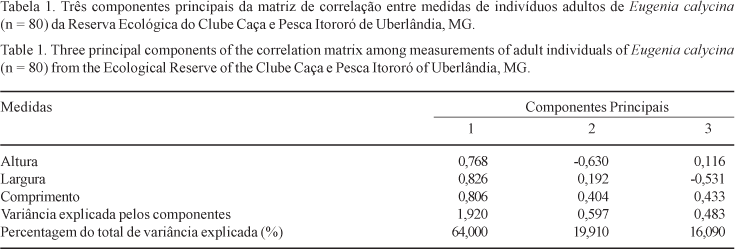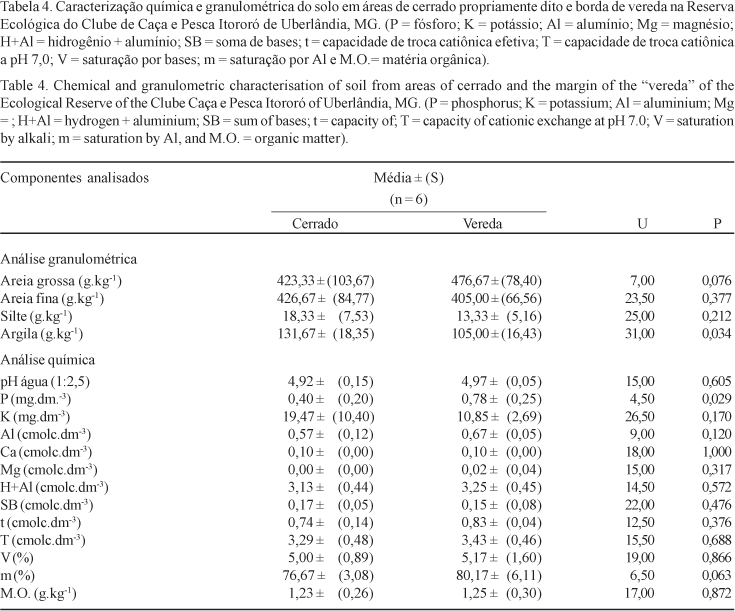The aims of this work were to verify the incidence of phenotypic variation and the plastic potential of Eugenia calycina in a transitional savanna/palm swamp area. Subpopulations were characterized by seed weight, number of seeds per fruit and number of flowers per plant. Moreover, density of occurrence and the rate of parasitism on fruits by larvae of flies (Diptera: Tephritidae) in each area were significantly different. Asynchronism of the flowering period, being late for the savanna area, was also observed. A genetic quantitative model was used to measure phenotypic plasticity based on a reciprocal transplantation experiment of sibling-seeds into soils collected from each area. Three aspects of plastic potential were evaluated: height of steam and number and length of the seedlings leaves. Observed differences in these characters were attributed not only to genetic divergences but also to phenotypic plasticity. The individuals showed different plastic responses, diverging in their ability to respond to environmental influences. The data confirm the role of phenotypic plasticity in the adaptive and evolutionary process involved with ecotype formation in savanna/palm swamp transitional vegetation.
Eugenia calycina; phenotypic plasticity; quantitative genetics







